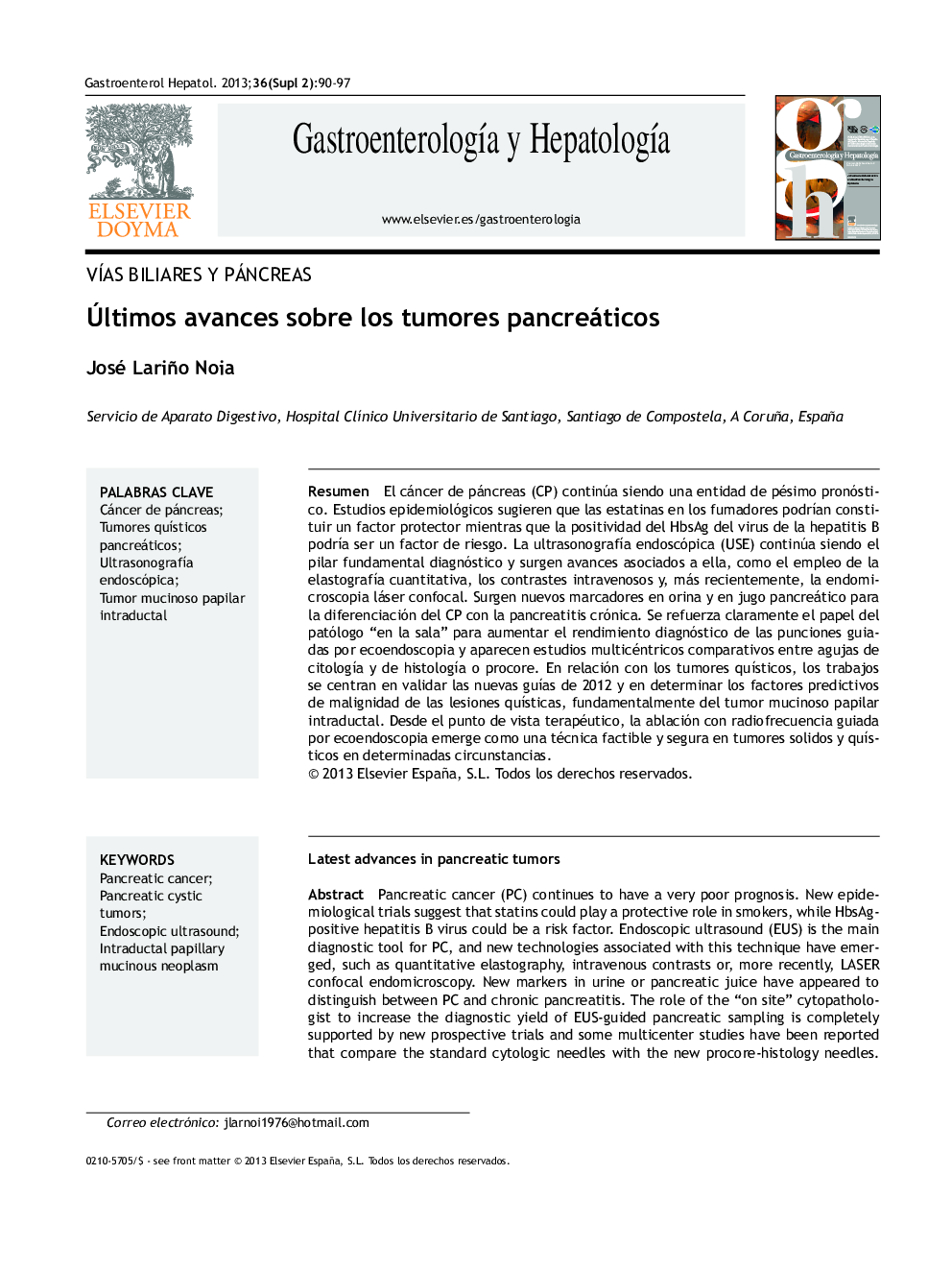| Article ID | Journal | Published Year | Pages | File Type |
|---|---|---|---|---|
| 3288302 | Gastroenterología y Hepatología | 2013 | 8 Pages |
Abstract
Pancreatic cancer (PC) continues to have a very poor prognosis. New epidemiological trials suggest that statins could play a protective role in smokers, while HbsAg-positive hepatitis B virus could be a risk factor. Endoscopic ultrasound (EUS) is the main diagnostic tool for PC, and new technologies associated with this technique have emerged, such as quantitative elastography, intravenous contrasts or, more recently, LASER confocal endomicroscopy. New markers in urine or pancreatic juice have appeared to distinguish between PC and chronic pancreatitis. The role of the “on site” cytopathologist to increase the diagnostic yield of EUS-guided pancreatic sampling is completely supported by new prospective trials and some multicenter studies have been reported that compare the standard cytologic needles with the new procore-histology needles. Regarding cystic pancreatic tumors, most studies have aimed to validate the 2012 Sendai international guidelines and to ascertain predictive factors of malignancy in cystic lesions, mainly intraductal papillary mucinous neoplasm (IPMN). The role of intracystic CEA levels in determining malignancy is challenged. From a therapeutic point of view, EUS-guided radiofrequency ablation of cystic and solid lesions has emerged as a feasible and safe procedure in specific circumstances.
Keywords
Related Topics
Health Sciences
Medicine and Dentistry
Gastroenterology
Authors
José Lariño Noia,
